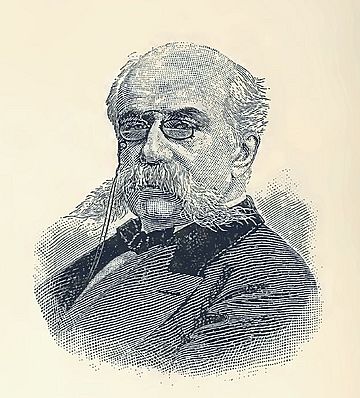Charles B. Norton facts for kids
Charles Benjamin Norton (born July 1, 1825 – died 1891) was an important American figure. He was a historian, a publisher, and a dealer in rare books. He worked hard to save old American history, like important papers and books. He started a magazine called Norton's Literary Letter in 1857, which included information about coins. During the American Civil War, he was a Lieutenant-Colonel. After the war, he wrote books about new weapons and inventions.
Contents
Early Life of Charles Norton
Norton was born in Hartford, Connecticut, on July 1, 1825. He spent much of his early life in Boston. There, he became well known among writers and publishers. His father was Major Benjamin Hammatt Norton. He served as a consul in Pictou under President Zachary Taylor.
Norton's Career in Books and Coins
Charles Norton was famous among coin collectors, also known as numismatists. He started and published Norton's Literary Letter in October 1857. This magazine shared information about coins. It also inspired coin collectors in New York and New England. They later created their own magazine, the American Journal of Numismatics. In April 1855, Norton sold his collection of books at an auction house in New York.
Before 1861, Norton was a dealer in rare books in New York City. He often traveled to Europe to buy special books. He bought books from famous libraries. He then gave or resold them for public and private use. In 1861, he gave many books to the library at Harvard University.
Norton was best known for his Literary Gazette. This was the first magazine for libraries in the country. The first library convention was held in the Literary Gazette in September 1853. This meeting in New York City was a very early step toward forming the American Library Association. Starting in 1857, Norton wrote and published a series of catalogs. These were called Norton's Literary Letter. They featured "Rare and Valuable Works relative to America." This included rare books, letters, coins, and medals. The publication also had many historical essays. Norton, along with Grant and Coit Gilman from Yale University, edited the magazine.
Norton also helped organize a reunion in 1887. This reunion was for people who attended the 1853 library convention. It took place at the American Library Association meeting at the Thousand Islands.
Norton's personal emblem was on his stationery and magazine cover. It showed a balance scale. On one side was a sword, and on the other was a quill pen. The pen weighed more than the sword. This symbolized the idea that "The Pen is mightier than the Sword."
Norton's Role in the Civil War
During the American Civil War, Norton served bravely in the Union Army. He started as a quartermaster in a New York Regiment. A quartermaster is someone who provides supplies. Later, he became a lieutenant colonel in the 5th Army Corps. This corps was part of the Army of the Potomac. He worked on the staff of General Fitz John Porter. Their headquarters were at Harrison's Landing in Virginia.
Norton was present at two major battles in 1862. These were the Second Battle of Bull Run in Virginia and the Battle of Antietam in Maryland. He was promoted to brigadier-general in 1863. He then left the army on January 6 of that year.
During the Northern Virginia campaign, General Lee and his troops were moving closer to Washington D.C. Norton offered to protect a huge library of historical documents. This library belonged to Peter Force and was in Washington. Norton wanted to hide it from possible Confederate invaders. However, Force did not want to move his library. He turned down Norton's offer.
Post-War Inventions and Reports
Soon after the war, in 1867, there were big international shows called Expositions in Paris. Norton and his friend William J. Valentine went to Paris. They wanted to see the newest U.S. military weapons and ammunition. Norton had criticized the U.S. government. He felt they were not sending their own experts to these shows. He thought they were ignoring new weapons and the engineers who made them.
So, Norton, acting as a U.S. Commissioner, and Valentine decided to investigate themselves. In 1868, they published their findings in a 286-page report. It was called Report to the Government of the United States on the Munitions of War Exhibited at the Paris Universal Exhibition. This report included many drawings and details of new breech-loading rifles and other weapons. They gave the report to the Secretary of State, William H. Seward. Along with describing the new weapons, they hoped Congress would read it. They also wanted the War Department to publish it. The information they gathered led to another book by Norton in 1880. This book described American inventions in small arms, heavy guns, and other weapons.
Final Days and Legacy
Norton was chosen to be a United States Commissioner for the Paris Exposition in 1867. He passed away in Chicago in 1891. At the time, he was helping to plan the World's Columbian Exposition.
Selected Works by Charles Norton
Norton wrote many books on different national topics. These included government, history, conventions, and military subjects. Some of his well-known works include:
- Catalogue of a bibliographical library, 1855
- Norton's literary gazette and publishers' circular, 1855
- American inventions and improvements in breech-loading small arms, heavy ordnance, machine guns, magazine arms, fixed ammunition ... 1880
- Report to the Government of the United States on the Munitions of War Exhibited at the Paris Universal Exhibition, 1867
- Norton's Literary Letter: Comprising American Papers of Interest Upon Numismatics and Medals, 1862
- Official Catalogue Foreign Exhibition, Boston, 1883
- The American Exhibition of the Arts, Inventions, Manufacturers, 1885
- The President And His Cabinet: Indicating The Progress Of The Government Of The United States Under The Administration Of Grover Cleveland, 1888





